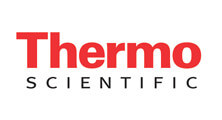Goal
The aim of this study was to demonstrate the robust and routine performance of the Thermo Scientific™ TSQ™ 9000 triple quadrupole GC-MS/MS system with Advanced Electron Ionization source for the analysis of pesticide residues in food matrix.
Introduction
In today’s modern, high-throughput analytical laboratory, instrument downtime can have a significant impact on laboratory productivity. Analysts working in such fast-paced environments are required to investigate large numbers of samples and to deliver accurate and valid results consistently. Having to disrupt this process causes sample turn-around times to increase and, as a result, the cost per sample to surge.

The advent of gas (and liquid) chromatography with triple quadrupole mass spectrometry (GC-MS/MS and LC-MS/MS) increased selectivity and drove detection limits down, reducing the requirement for sample clean-up and leading to quicker, cheaper methods (ex. QuEChERS1). However, these sample preparation methods often allow for more of the matrix to make its way into the chromatographic system and the ionization source, affecting the system robustness and increasing the maintenance intervals. Without a highly sensitive and robust ion source, detector responses can quickly drop off, leading to quality control (QC) failures, higher detection limits, and ultimately a failure to deliver acceptable and compliant results. Ensuring that the analytical systems used for these workflows are rugged enough to deal with the challenges faced is of the utmost importance to the user.In this study, the performance of the TSQ 9000 GC-MS/MS triple quadrupole mass spectrometer with the new Advanced Electron Ionization (AEI) source is assessed. For this, peak area repeatability of selected pesticides was analyzed in approximately 900 injections of a complex sample extract. In addition to this, an easy-touse, automated system, set up with the new SmartTune feature, is highlighted as a unique tool used to simplify the user experience and speed up analysis.





